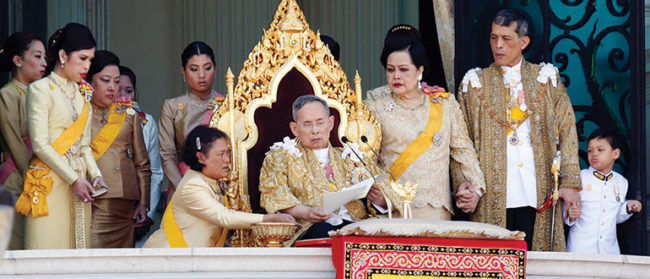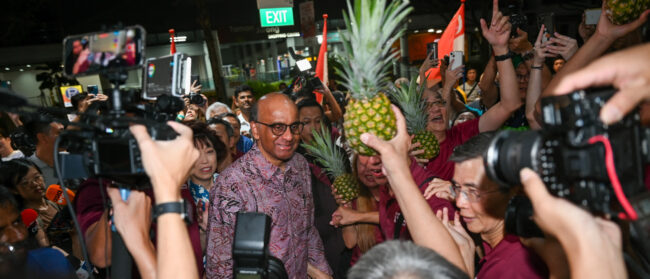It was a victory for the ages. After more than five decades of military rule, Myanmar was finally returned to civilian governance with the election last November of the National League for Democracy (NLD).
The party’s widely revered leader, Aung San Suu Kyi, had after a lengthy struggle that included 15 years under house arrest led her countrymen into a new era. Supporters flooded the streets of Yangon and other cities and towns across the country to celebrate the dawning of democracy. It was hailed as a momentous step forward for the country’s democratic movement.
But it was not only about the NLD finally taking office, a privilege denied to the party in 1990 when the military annulled its election victory and refused to hand over power. It was also about the military generals agreeing to release their ironclad grip on Myanmar – albeit with caveats including 25% guaranteed representation in parliament and control of the ministries of defence, home affairs and borders.
As with all beginnings, the transition of power was just the first step on the path to rejuvenating a country long cut off from the international community. Major challenges remained. One year on, Southeast Asia Globe takes at look at how the NLD government has dealt with some of the key issues it has faced, such as how to repatriate refugees from conflicts between the Myanmar Army and ethnic groups and the situation for minority Muslim Rohingyas in troubled Rakhine state.
We also examine whether the military-backed Union Solidarity and Development Party can transform into a meaningful opposition – a critical ingredient for the functioning of a parliamentary democracy.
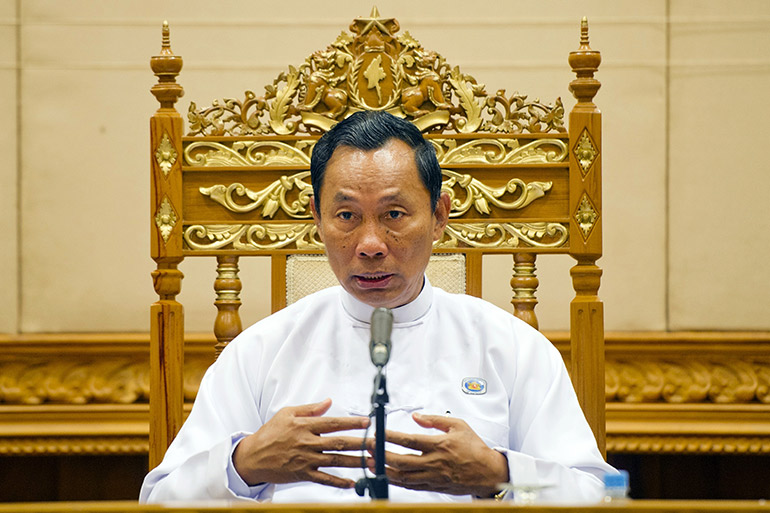
Fade to black: now in opposition, the USDP plots its future
After leading the country for five years, Myanmar’s opposition Union Solidarity and Development Party is crumbling following its resounding defeat at 2015’s polls
By Logan Connor
To many, Shwe Mann was poised to help unite a fractured Myanmar.
As parliamentary speaker and chairman of the Union Solidarity and Development Party (USDP), Shwe Mann was seen as a moderate, reform-minded leader in the run-up to Myanmar’s highly publicised 2015 general election. Analysts believed he would build a coalition with Aung San Suu Kyi’s National League for Democracy (NLD) if neither party won an outright majority.
Those hopes of reconciliation came to an abrupt end in August 2015 – just months before the election – when security forces, under the direction of USDP leadership, sealed off the party headquarters in the capital of Naypyidaw, forbidding anyone to leave. Details of the raid are murky, but media outlets reported it was the beginning to a party reshuffling that would eventually see Shwe Mann removed from his position as USDP chairman and his close allies demoted. Thein Sein, the country’s former president who orchestrated the purge, gave the job to a military-minded ally, Htay Oo.
The party then released an Orwellian statement saying the former general had been removed due to being “very busy” with his dual roles of speaker and party chair. “The party needed to be reformed for party unity,” it said. Analysts speculated that senior general Than Shwe, a long-time junta leader and ex-director of psychological warfare, played a role in the shakeup.
Soon after the purge, political analyst Moe Thu told Radio Free Asia that it illustrated a lack of democratic process within the party’s ranks. “These changes were made undemocratically, so how can they bring democracy to the country?”
The merchant class and the cronies are benefitting from Aung San Suu Kyi and her saleswomanship of Burma as the place to invest. The USDP has nothing to offer this class, not anymore
The USDP has since been relegated to the backseat of Myanmar politics. It is now the country’s opposition party, occupying 117 seats in a parliamentary chamber dominated by the NLD and Suu Kyi, who in the eyes of the international community is viewed with Nelson Mandela-like reverence.
Founded in 2010, the USDP was a vehicle for former military leaders to contest that year’s general election, winning 388 seats in a contest widely condemned as flawed by observers. While the USDP’s inner workings remain largely a mystery, leaders have called for reform of the party’s image and structure, a necessary step if the party is to stage a comeback during the country’s next general election in 2020.
After more than a week of counting, the NLD was found to have won 77% of seats of Myanmar’s bicameral legislature while the USDP secured just 10%. Under the constitution, army officers are automatically granted a quarter of all seats – giving the military a controversial veto power – meaning that although the NLD won 887 seats, it holds 390 across the two houses of parliament.
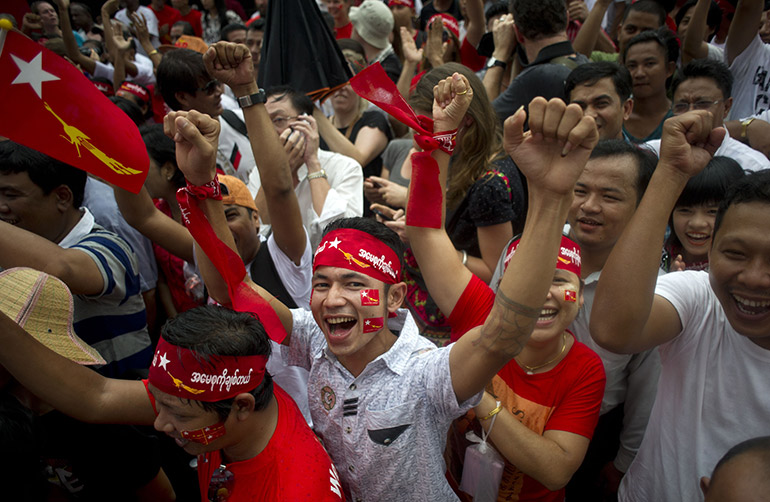
The loss stunned the USDP, which had hoped to capitalise on five years of civilian-led reforms under then-President Thein Sein’s “disciplined democracy”. Before the election, party leadership had estimated it would win at least 20% of parliamentary seats. “The result was so unexpected for the USDP,” one unnamed party member told the Myanmar Times. “We have learnt the best lesson from the election.”
Following the loss, party members began to jump ship. In the first high-profile defection, former senior leader Thura Aung Ko – who had been demoted during last year’s purge – said he was cutting ties with the USDP. “I will serve for my country’s citizens as an individual, in coordination with any party-organisation,” he told The Irrawaddy.
Joshua Kurlantzick, a senior fellow for Southeast Asia at the Council on Foreign Relations, said party officials saw few reasons to stick around after the election. “A lot of their rank-and-file had joined the party during military rule, basically because they had to,” he said. “It was a way to get a few handouts, or it curried favour with local officials. With those perks gone, the USDP is going to see its rank-and-file diminish dramatically, at least for now.”
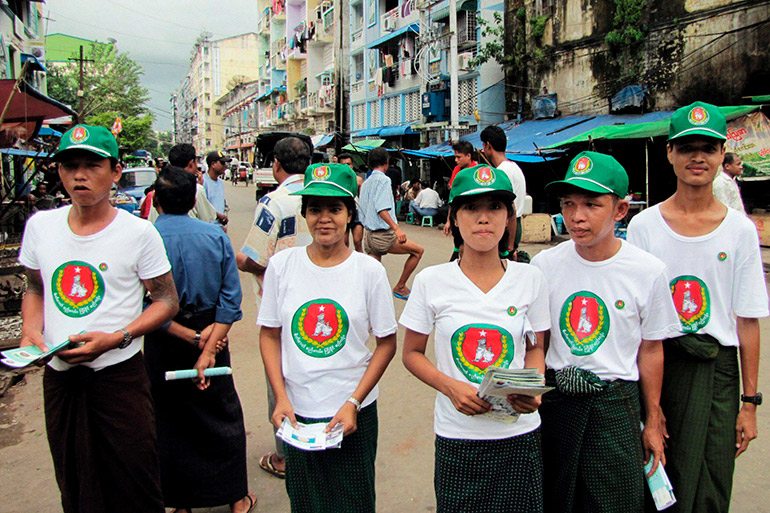
During a party meeting this past May, Thein Sein claimed that “weakness” in the USDP was the main cause of their defeat. “These weaknesses exist in the party’s central committee, as well as on the ground,” he said, according to the Myanmar Times. “We have to cooperate to win the next election by examining these weaknesses and reforming the party.” He added that the USDP has been rebranding itself as a “people’s party”, with members trying to reform village, township and district committees as well as bring in younger members. The comments came not long after Thein Sein, just days after resuming his duties as party chair in April, permanently expelled 17 party members, including Shwe Mann.
What they don’t have is a general, a public figure around whom their party can rally. You can reform all you like. But unless you produce a personality, you won’t get anywhere
Despite the turmoil, officials have continued to promote the party. Before stepping down from his role as co-chair in August, Htay Oo had been actively campaigning on Facebook, posting about the international visitors that came to the party’s head office, and his visits to villages and donations to monasteries. And Frontier Myanmar reported in April that Thein Sein would establish a new Thein Sein Centre, to include a library and research and development arm, in an effort to rehabilitate the party’s image ahead of the 2020 election.
In late August, USDP leadership convened in Naypyidaw for a closed-door party convention. Thein Sein stepped down, but remained as a ‘patron’, heading a new ‘central leadership committee’, to operate in an advising role, composed of nine senior party members. Taking Thein Sein’s place was Than Htay, a former brigadier general who previously served as both energy and railways minister.
Ye Htut, a former Myanmar soldier and USDP information minister who retired from government in March when the NLD took power, said the congress was a symbol of party leadership handing control to a “new generation of leaders”, as well as the USDP’s commitment to reform. “These changes not only happen at the top, but at all levels of party organisations,” added Ye Htut, who is now a visiting fellow at Singapore’s Institute of Southeast Asian Studies.
Despite changes within the USDP, perhaps the lack of an iconic leader will be what proves fatal for the party. While Suu Kyi has been the unifying force behind the NLD – earning from some followers the title of Amay, or mother – the USDP does not have
a figure who is as well known, revered and, ultimately, likeable.
“What they don’t have is a general, a public figure around whom their party can rally,” said Christopher Lamb, chair of the Australia Myanmar Institute. “You can reform all you like. But unless you produce a personality, you won’t get anywhere.”
Turbulent times: a brief look at the recent history of Myanmar
For Myanmar, the recent historical narrative is one of tumult. A military coup came in 1962 in response to then-President Thakin Nu’s policies, including his tolerance of separatism in the ethnically diverse nation. The new junta suppressed independent newspapers, nationalised the economy and formed a one-party state. Anti-junta protests saw thousands of deaths during the 1970s and 1980s, a period that also saw widespread discrimination against ethnic minorities and the imposition of martial law.
Aung San Suu Kyi was placed under house arrest in 1989 – the same year Burma is renamed ‘Myanmar’ – but the 1990s began with a landslide election victory for her National League for Democracy party, a result that was ‘annulled’ by the military. Holding on to power with a vice-like grip, the junta nevertheless released Suu Kyi in 1995. By 2002, she was back in ‘protective custody’, following clashes between her supporters and government forces, and was not permanently freed until 2011.
A civilian-led government was installed in 2011, paving the way for democratic reforms. Suu Kyi became an MP in a 2012 by-election, while the government also signed ceasefires with ethnic rebel groups and abolished pre-publication censorship. Despite this progress, hundreds of political prisoners remain in jail and Muslim Rohingyas face violence and oppression in Rakhine state.
In November 2015, the NLD won a landslide victory and Htin Kyaw was sworn in as president in March 2016. While the military continues to exert strong influence over Myanmar, international sanctions against the country have been drastically eased, the economy is growing at a rapid pace and social issues are beginning to be addressed.
For years, the USDP’s base, and their source of hope for the 2015 election, was Myanmar’s rural population. The party had allegedly garnered a ‘grassroots’ following through pork-barrelling and offering low-interest loans to small business owners and farmers. But this rural constituency, perhaps swept up in the fervour of Suu Kyi or disheartened with an underperforming USDP, surprised many with its support for the NLD. Htay Oo described his shock over the USDP’s defeat within his own parliamentary constituency of Hinthada, a small township in the Irrawaddy delta. “I wasn’t expecting it because we were able to do a lot for the people in this region,” he told Reuters.
Marco Buente, an associate professor of politics and international relations at Malaysia’s Monash University, said the USDP has always been seen as a proxy for the military, with many of its leaders having served in senior posts under the junta. That has made it difficult to gain widespread support, when the armed forces is anathema to many in the wake of 50 years of military rule rife with human rights abuses including forced labour, conscription and indiscriminate killings.
“The defeat of the 2015 elections, consequently, is rooted in the proximity of the party to the military, and the experience under military rule,” said Buente. And while Shwe Mann was said to be the leader who could break such close ties with the military, he was ultimately overthrown due to the perception that he was too close to the opposition.
The party’s economic influence, long the crux of its power, could be coming to an end. For years, the USDP enjoyed a complex pool of resources cultivated through links to ‘crony’ tycoons, who allegedly received no-bid contracts from government ministries, exploited the country’s natural resources and engaged in other shady dealings. The resources the USDP accumulated could, in turn, be shared with rural voters to win votes.
Maung Zarni, a dissident scholar permanently exiled in the UK, said these tycoons were unfaithful come voting day. “The merchant class and the cronies would vote for whoever is likely to win, with profit and increased investment being their primary electoral goal,” he said. “But this class is benefitting from Aung San Suu Kyi and her saleswomanship of Burma as the place to invest. The USDP has nothing to offer to this class, not anymore.”
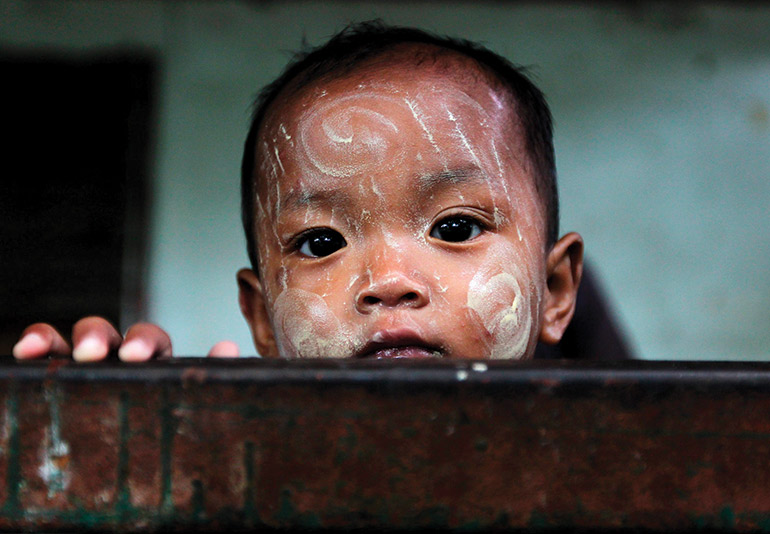
East of the border: can Suu Kyi tempt refugees back from Thailand?
Myanmar is trying to bring refugees home from neighbouring Thailand but, with war still raging and uncertainty reigning, most do not want to return
By David Doyle
“I do not trust Aung San Suu Kyi,” said 20-year-old Tha Lay Paw, a refugee from Myanmar living in a camp on Thailand’s border.
While Suu Kyi and her National League for Democracy (NLD) party’s election victory last year was met with rapturous celebration on the streets of Myanmar’s biggest city, Yangon, 150 miles away, in Mae La refugee camp, suspicion is common. Even so, refugees such as Lay Paw are being asked to place their trust in Myanmar under its NLD government.
In June, Suu Kyi agreed to cooperate with the Thai government on the voluntary return of refugees to Myanmar. At the same time, declines in international donations and a lack of options to relocate elsewhere are making life harder for the 103,823 refugees living in nine camps along the Thai border. But many still do not want to return.
Lay Paw has spent almost all her entire life in Mae La. Her family fled across the border when she was three years old, running from violence that raged between the Karen National Union (KNU) and the Myanmar Army for decades.
The KNU signed the much-vaunted Nationwide Ceasefire Agreement in October last year, but that has not convinced Lay Paw that she can return home safely. “If we trust her [Suu Kyi] and what she says does not happen, then it is we who will get in trouble,” said Lay Paw. “It is not just Aung San Suu Kyi who makes the decisions, it is also the military… Even after the ceasefire there have been conflicts.”
“We are worried that this is not real peace,” agreed Robert Htwe, chairman of the Karen Refugee Committee. “We don’t know if one day there will be more fighting; we don’t want to be refugees again.”
Such wariness appears well founded. In mid-September, clashes ignited between the army, commonly known as the Tatmadaw, and a splinter group of the Democratic Karen Benevolent Army (DKBA), an ethnic armed group, in Karen State. More than 3,000 villagers have been displaced by the violence, and about 60% of those living in the Thai camps are from Karen State.
The real problem is that Burma is far from being ready to receive these refugees back and has done little to resolve the serious problems on the Burma side of the border
At the end of August, the NLD began a reinvigorated peace process with the Panglong peace conference in Naypyitaw, with the aim of ending the ethnic minority insurgencies that have plagued the country for almost 70 years. The meeting included the rebel armies that did not sign last year’s ceasefire agreement but, with no resolution agreed at the conference, Suu Kyi admitted that it would be a long road ahead.
Suspicion and distrust of the Tatmadaw is ingrained in many ethnic minorities after decades of savage fighting. International human rights organisations have documented abuses by multiple actors in these conflicts, but in particular the Tatmadaw has been accused of crimes including extrajudicial killings, torture and rape.
“First and foremost, there is the continued presence of the Tatmadaw in areas where refugees would be expected to return. No refugee is going to go back anywhere near the Tatmadaw, which remains unreformed and rights abusing,” said Phil Robertson, deputy director of Human Rights Watch’s Asia division. “The real problem is that Burma is far from being ready to receive these refugees back and has done little to resolve the serious problems on the Burma side of the border,” he added.
And yet there is increasing pressure on refugees to return to Myanmar. Funds to support camp life are drying up as international donors find their resources stretched. Food rations in the camps have been cut over the years – refugees used to receive 16kg of rice per month, and now they receive nine.
“People [in the camps] can see services are being reduced,” said Sally Thompson, executive director at the Border Consortium, one of the largest NGOs operating in the camps. “It is a factor with the competing humanitarian crises globally that donor funds are limited. Inevitably people feel they are under pressure to go back.”
The Border Consortium has seen donations from the international community fall from $23.6m in 2015 to an estimated $17.4m for 2016 – a decline of 26%. The NGO has a budget for the year of $21.8m, meaning a shortfall of $4.4m.
One of the biggest drops in donations has come from Sida, the Swedish International Development Cooperation Agency. Peter Lundberg, humanitarian director at the agency, said the Swedish government is spending more on aid but that aid is being used in a more “holistic way” such as supporting Rohingya Muslims on Myanmar’s border with Bangladesh. However, he admits that more is having to be done with the funds.
“Our budget has grown, we have more money, but it is not to the same extent as the needs have increased,” he said. “It is an unprecedented figure of 130 million people in dire need of help and 60 million displaced across the world – that’s a big challenge.”
Refugees wanting to move to a different country are finding that avenue closed to them as well. The UN refugee agency (UNHCR) and the Thai government ran a registration process in 2005 for people who wanted to be relocated to a third country. The majority of those who did register have been resettled, mostly to the US. However, many did not realise the importance of registering, or arrived after the registration date. With the Thai government giving no indication it will allow another round of registrations, a large portion of the camps’ population – nearly 53,000 people – is denied the opportunity to go to a different country.
At the same time, voluntary repatriation centres are also being opened in the camps to help those who wish to return to Myanmar. “Many stakeholders continue to take part in preparations for a possible voluntary repatriation in the future, and this preparatory phase can make the refugee community feel increased pressure, but that is not the intention,” said David John, senior regional programme coordinator for the International Organisation for Migration. “The intention is to be prepared in the event that conditions change and refugees decide they want to return home.”
It is not just violence that is preventing people from returning home. Refugees cite uncertainties over what land they would receive, if any, and whether education and job opportunities would be available, as well as one of the legacies of decades of conflict: landmines.
“Now is not the time when we can go back to Burma. All people want to be able to go home, but we are worried about many things like the landmines and land rights,” said Htwe.
The UNHCR, the Thai government and the government of Myanmar have all said that refugees will not be forced to return home.
Burma is my motherland; it is my country. I think if Burma had no conflicts we would want to go back and live our lives there, but it is not peaceful so we don’t want to go
Zaw Htay, deputy director in the Myanmar president’s office, told Southeast Asia Globe: “We have a plan to find job opportunities for the refugees and a plan to build homes for them, but it is complicated because some of the people don’t want to leave their camps.” He added that the government will continue to pursue peace and, once peace is achieved, would begin a demining programme.
According to the UNHCR, there has been “increased interest” from refugees to return home. “While we do not assess the current situation in southeastern Myanmar to be conducive for promoting returns, we are exploring ways to facilitate and support such returns if key protection benchmarks are met,” a spokesperson said.
If and when those benchmarks will be met remains to be seen. For now, though, the refugees see nothing on the horizon but uncertainty.
Paw Wah lives in the Mae La camp with her husband and two young children. She left Myanmar nine years ago to flee violence near where the Tatmadaw has been fighting the DKBA.
“Burma is my motherland; it is my country,” she said while sitting cross-legged on the floor of her bamboo home. “I think if Burma had no conflicts we would want to go back and live our lives there, but it is not peaceful so we don’t want to go. For me, I am happy to stay here.”
****
Challenges afoot: Democracy has won the day in Myanmar, but the new government still has plenty of work to do
Fixing Myanmar’s economy is a crucial issue facing Aung San Suu Kyi’s NLD party. Although the Asian Development Bank (ADB) estimates that Myanmar’s economic growth will be at 8.4% by the end of this fiscal year, there are a number of threats to the longevity of this boom. Poor private property rights, a lack of employment standards, rampant child labour and corruption are all barriers to foreign investment in the country. The ADB also estimates that $60 billion is needed by 2030 to adequately service the country’s crumbling transport infrastructure.
Poverty remains a serious issue that afflicts people across Myanmar. According to the ADB, 25.6% of people in country live below the national poverty line. The consequences of this are far-reaching, affecting infant and maternal health as well as economic progress – 40 out of every 1,000 babies in the country die before their first birthday and only 2% of the population has access to the Internet. Cambodia, Laos and the Philippines have lower levels of poverty than Myanmar, but in 2014 the country came in at 148th out of 187 countries listed on the Human Development Index.
As well as maintaining a strong level of political influence, Myanmar’s army continues to wage war on minority groups around the country. The five-day 21st Century Panglong Conference at the end of August was a step toward reconciliation after decades of conflict between multiple ethnic rebel groups and the military, but was unable to make major inroads for peace. According to UN figures released ahead of the conference, some 220,000 people are currently displaced by ongoing fighting within Myanmar’s Kachin and Shan states, as well as by tensions in the western state of Rakhine.
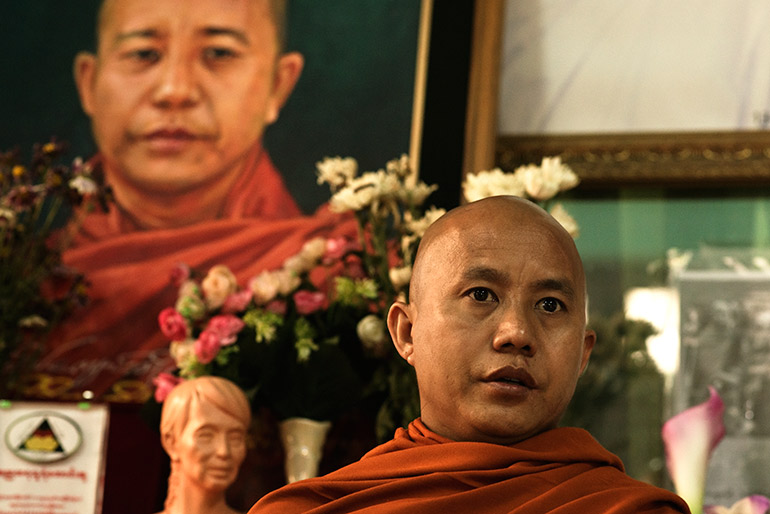
No place to call home: the never-ending plight of the Rohingya
In Myanmar’s Rakhine State, thousands of Rohingya still languish in internment camps, while millions more are oppressed by movement restrictions. As violence flares, some are pinning their hopes on a new commission created to examine the situation
By Fiona MacGregor
Muhammad Haniba, a 36-year-old father of seven, is crouched inside the tiny, single room in a dilapidated longhouse he shares with his family in an internment camp in Myanmar’s Rakhine State. “I never imagined I would still be here four years later. I hope one day we can go home,” he says. The buildings, built to the most basic standards, were not designed to stand this long.
“It’s so hot in here, we have to find shelter outside,” says Haniba, pointing to the latrines just a few metres away where women and children – all members of the persecuted Rohingya minority – huddle in the shade of the toilet cubicles shared by all of the camp residents.
Among the many challenges faced by Aung San Suu Kyi when her National League for Democracy (NLD) party swept to victory in the November 2015 election, the plight of the nation’s Rohingya was among the most high profile internationally. Yet, inside Myanmar, the new government made it clear it had other priorities.
The surprise appointment in late August of a new advisory commission, chaired by former UN secretary general Kofi Annan and tasked with finding a solution to sectarian tensions in Rakhine, however, suggested the new government was starting to bow to international pressure.
In the past we normally had stability, and that’s what we want for our future. We want to go back to the normal situation we had before 2012
“Communal strife is not something that we can ignore. It’s too important; it’s too serious for us to leave it even until the next year,” state counsellor Suu Kyi said during a visit to Washington in September, when US President Barack Obama would go on to announce an end to all US sanctions on Myanmar.
Already the commission has got off to a bumpy start over its perceived role and membership, while rights experts have expressed concern about its ability to address the pressures of Buddhist nationalist hardliners who hold considerable political sway in Myanmar.
“The government created this commission for political reasons, but the local [Rakhine] people don’t trust this Mr Annan can solve the problem. It is a local problem,” said Sittwe-based lawyer Myint Soe.
After violent riots broke out between ethnic Rakhine Buddhists and the stateless minority Rohingya population in 2012, 140,000 displaced Muslims – considered to be illegal Bengalis by the majority in Myanmar despite many having lived in the region for generations – were squeezed into internment camps. About 100,000 still remain.
A further one million others are subject to movement restrictions – imposed during military rule under former President Thein Sein – preventing them from accessing proper health care, education or employment opportunities.
The Rohingya population was barred from voting in the election, but despite Suu Kyi’s silence on their persecution, and the fact that the NLD did not nominate a single Muslim candidate to stand at the polls – widely seen as an appeasement of extreme Buddhist nationalist opposition – Suu Kyi was still heralded by most in the country’s Muslim community as their best hope.
Immediately after the election, such faith seemed ill founded. Just days after the poll, NLD spokesman Win Htein, said of the Rohingya situation: “We have other priorities. Peace, the peaceful transition of power, economic development and constitutional reform.”
Yet even though the hardline Arakan National Party (ANP) won the majority of seats in Rakhine, Suu Kyi appointed an NLD parliamentarian, Nyi Pu, to the state’s chief minister position. An infuriated ANP questioned the move’s democratic legitimacy, but it means Rakhine has not been left in the hands of the more extreme elements.
While some local NGO workers say there had been a slight softening of approach by the new state administration, little has changed on the ground. Sectarian violence erupted last month after nine police officers were killed and five wounded in attacks on border posts, reportedly carried out by a group of Rohingya men, on 9 October. In the days that followed, 30 alleged perpetrators were killed, deputy minister for home affairs Aung Soe told reporters in Naypyidaw.
Rohingya activists have accused security forces of targeting civilians in the wake of the assaults, while the NGO Fortify Rights has reported eyewitness accounts of extrajudicial killings, including one incident where soldiers shot dead three Rohingya men on 10 October. “The people of Rakhine State deserve protection and justice,” Fortify Rights’ CEO Matthew Smith said in a statement. “The army should work with local communities to instill calm.”
The most significant step toward ending the crisis in Rakhine to date came on 6 September: the nine-person Advisory Commission on Rakhine, led by Annan, touched down in the state capital of Sittwe to meet local community representatives from both sides of the region’s divide.
They were jeered by a crowd of ethnic Buddhists who object to this “foreign intervention” in what they insist is a local matter; given the thumbs up by Rohingya camp residents desperately hoping for an end to their ongoing plight; and left two days later having spoken to many people from both communities. But no one, including the commission’s members, seemed sure of just what would happen next.
At a subsequent press conference in Yangon, Annan raised eyebrows when he responded to the question: “Did any of you witness anything you would describe as oppression?” with the diplomatic reply, “Personally, I did not see it there.”
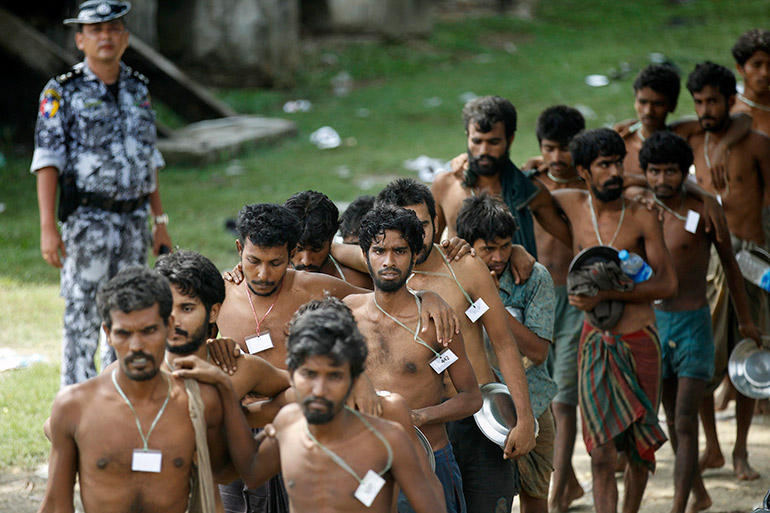
As commentators would later point out, almost every Rohingya he met was living under oppressive rules. But, Annan stressed, the commission was “not here to do a human rights investigation or to write a human rights report… I hope our recommendations will be helpful, as we intend to reduce tension and support development.”
The UN in Rakhine has been at pains to distance itself from the commission in a bid to protect the new body from the widespread belief in Rakhine that the UN and other international organisations are biased toward the Muslim population. However, as Annan’s and the other international appointments make clear, there are strong UN links, and the “development” theme stressed by the former UN secretary general fits the agenda of the current UN leadership in Myanmar and beyond.
The new government, too, has stressed the importance of development in solving conflict in Rakhine, which is one of the country’s poorest states despite its important geopolitical position on the Bay of Bengal and its valuable natural gas reserves.
In July, the World Food Programme (WFP) began cutting food rations to the IDPs who have been returned to their home areas or resettled. The WFP chief said the cuts were not due to budget issues, but to encourage transition and prevent further community conflict.
In Rohingya villages, movement restrictions prevent people from travelling to find work to feed their families. “I’ve no rice. We all go and borrow a little bit here and a little bit there and survive like that,” said Yar Ba Nu, 39, from Pa Rein village in Mrak U district.
And in the wake of the October border post attacks, the situation had reportedly worsened. At the time of writing, the WFP was being prevented from delivering food aid to 70,000 people in Rakhine State due to a military-imposed lockdown, according to the New York Times.
Despite these ongoing issues, the appointment of the commission – in conjunction with a major peace conference involving most of Myanmar’s ethnic armed organisations – has led to immediate international gains. Following the lifting of US sanctions, for the first time in 15 years the EU chose not to introduce a UN resolution condemning the country’s human rights record, with officials citing the new commission as an example of progress.
Rights defenders have expressed dismay at the international response. David Mathieson, senior researcher on Myanmar for Human Rights Watch, described the moves by the US and the UN as “premature and ill-advised” given the “appalling” conditions still faced by those in Rakhine.
“Burma’s main donors now need to maintain pressure on the government to ensure the Annan commission is not just a boutique diversion from the many hard decisions that need to be made to address the divisions in Rakhine, and the commission itself has to be guided by its terms of reference not bigoted agendas from Arakanese extremists and government hardliners,” he said.
Government representatives in Rakhine acknowledge that a difficult path lies ahead for the people who live in the state and those tasked with overseeing a solution to the problems. Tin Maung Swe, Rakhine State executive secretary, said winning trust would be a challenge for the commission. “In the past we normally had stability, and that’s what we want for our future. We want to go back to the normal situation we had before 2012. Mr Annan will connect with people from both communities and treat them equally. Some people will trust them, but some will not trust.”
Seeking resolution: Suu Kyi’s 21st Century Panglong Conference
Vanessa Johanson, the Myanmar country director for the United States Institute for Peace (USIP), discusses the outcomes of the 21st Century Panglong Conference. Held in August, the talks brought together armed ethnic rebels and the government in an effort to end long-running conflicts in Myanmar
How successful was the conference as a first step toward peace in Myanmar under the NLD?
The Panglong conference was, in a sense, the NLD government’s rebranding of the peace process under its auspices. While the conference was largely symbolic, most of the key conflict actors did participate for the first time, which at least demonstrated some good will from the government to work with all stakeholders. The peace process is essentially in the same place it was before the conference, however, and most of the work lies ahead.
What were some of the main issues that arose during the talks?
The four-day meeting featured 72 speeches from a wide range of ethnic, political, government and military leaders. It was a forum for airing views, rather than for dialogue. There was a sense that many people were able to speak publicly about issues that they hadn’t in the past; and the whole thing was broadcast live, a first in Burma. Common themes in the speeches were federalism, ethnic equality, security sector reform and national unity.
With major challenges still remaining, where does the peace process go from here?
The peace process aims to end the decades-old violent conflict and to eventually reframe the country through wide-ranging political dialogue. Significant negotiations and political bargaining are still needed to ending the ongoing violence, particularly in the northeast where conflict has in fact escalated since the Panglong conference. The existing Nationwide Ceasefire Agreement – signed almost exactly a year ago by eight out of the 21 main armed groups – is largely yet to be implemented as well. The political dialogue needs to move forward in a substantive, inclusive and meaningful manner.

